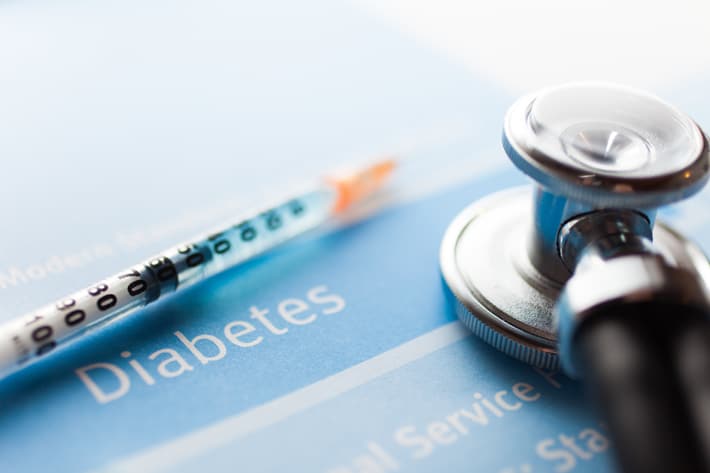Last updated on July 24th, 2020 at 10:26 am
Here are some quick study facts about Diabetes:
Diabetes:
- Diabetes mellitus is a chronic multisystem disorder of glucose metabolism related to absent or insufficient insulin supplies, impaired utilization of insulin, or both.
- Current theories link diabetes to genetic, autoimmune and environmental factors.
- Type 1 diabetes mellitus most often occurs in people who are under 30 years or age, a with a peak onset between ages 11 and 13, but can occur at any age.
- Type 1 diabetes is the end result of a long-standing process where the body’s own T cells attack and destroy pancreatic beta cells, which are the source of the body’s insulin.
- Because the onset of type 1 diabetes is rapid, the initial manifestations are usually acute.
- The classic symptoms – polyuria, polydipsia, and polyphagia are caused by hyperglycemia and the accompanying spillover of excess glucose in the urine.
- The individual with type 1 diabetes requires a supply of insulin from an outside source, such as an injection, in order to sustain life.
- Without insulin, the patient will develop diabetic ketoacidosis (DKA), a life-threatening disorder resulting in metabolic acidosis.
- Prediabetes is a condition in which blood glucose levels are higher than normal but not high enough for a diagnosis of diabetes.
- Those with prediabetes will usually develop type 2 diabetes within 10 years if no preventative measures are taken.
- Long-term damage to the body especially the heart and blood vessels may already be occurring in patients with prediabetes
- Type 2 diabetes, the pancreas usually continues to produce some endogenous (self-made) insulin. However, the insulin that is produced is either insufficient for the needs of the body and/or is poorly used by the tissues.
- The most important risk factor for developing type 2 diabetes are more nonspecific, and include fatigue, recurrent infections,recurrent vaginal yeast or monilia infections, prolonged wound healing, and visual changes.
- Gestational diabetes develops during pregnancy and is detected at 24-28 weeks of gestation, usually following an oral glucose tolerance test.
- Although most women with gestational diabetes will have normal glucose levels within 6 weeks postpartum they are more at risk for developing type 2 diabetes in 5-10 years.
- a diagnosis of diabetes is based on one of three methods: fasting plasma glucose level, random plasma glucose measurement, or 2 hour or oral glucose tolerance test.
- The glycosated hemoglobin test (HbA1c) is useful in evaluating long-term glycemic levels. The American Diabetes Association (ADA) recommends keeping the AiC level below 7%.
- The goals of diabetes management are to reduce symptoms, promote well-being, prevent acute complications of hyperglycemia, and prevent or delay the onset and progression of long-term complications. These goals are most likely to be met when the patient is able to maintain blood glucose levels as near to normal as possible.
- Exogenous (injected) insulin is needed when a patient has inadequate insulin to meet specific metabolic needs.
- Insulin is divided into two main categories: short-acting (bolus) and long-acting (basal) insulin.
- Basal insulin is used to maintain a background level of insulin throughout the day; bolus insulin is used at mealtime to combat postprandial hyperglycemia and at bedtime.
- A variety of insulin regimens are recommended for patients depending on the needs of the patient and their preference.
- Routine administration of insulin is most commonly done by means of subcutaneous injection, intravenous administration of regular insulin can be done when an immediate onset of action is desired.
- The technique for insulin injections should be taught to new insulin users and reviewed periodically with long-term users.
- The speed with which peak serum concentrations are reached varies with the anatomic site for injection. The fastest absorption is form the abdomen.
- Continuous subcutaneous insulin infusion can be administered using a insulin pump, a small battery operated device that resembles a standard paging device in size and appearance.
- An insulin pump is programmed to deliver a continuous infusion of short-acting insulin 24 hours a day with boluses at mealtimes.
- Hypoglycemia, allergic reactions, lipodystrophy, and Somogyi effect are problems associated with insulin therapy.
- Lipodystrophy (atrophy of subcutaneous tissues) may occur if the same injection sites are used frequently, but the incidence is reduced with the use of human insulin.
- The Somogyi effect is a rebound effect in which an overdose of insulin induces hypoglycemia.
- Usually occurring during the hours of sleep the Somogyi effect produces a decline in blood glucose level in response to too much insulin.
- The dawn phenomenon is characterized by hyperglycemia that is present on awaking on the morning resulting from the release of counter-regulatory hormones in the predawn hours.
- Oral agents (OAs) are not insulin; they work to improve the mechanisms by which insulin and glucose are produced and used by the body.
- Metformin (Glucophage) is a biguanide glucose-lowering agent.
- Alcohol is high in calories, has no nutritive value, and promotes hypertriglyceridemia.


